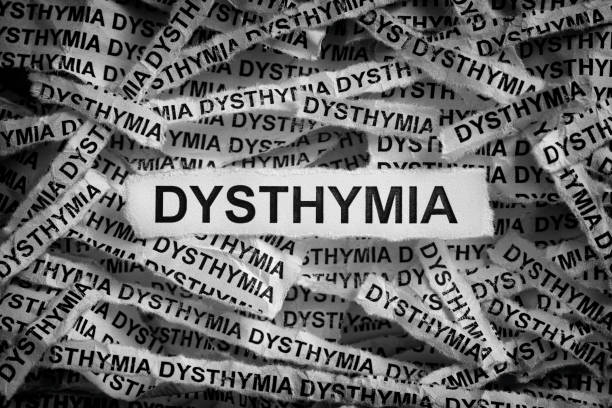Sean Grover L.C.S.W. Reviewed by Kaja Perina

There are 3 common causes of dysthymia, and here are 3 reliable solutions.
High-functioning depression, also referred to as dysthymia, can be hard to spot. Unlike major depressive episodes, high-functioning depression is low-level, chronic, and doesn’t have a clear trigger. Interventions to address high-functioning depression include increased self-care, creative expression, and medication.
The image most people attach to the word “depression” is of a solitary, lonely figure, despairing and downcast, silhouetted by a bleak landscape. We may wonder, “What happened to that poor soul?”
Yet this image isn’t always accurate. On the surface, some depressed people appear to lead bustling, fulfilling lives; check out their social media, and you’ll see their smiling faces and beautiful homes. They’re functioning so well that even the thought that they could be depressed seems outrageous.
High-functioning depression, also referred to as dysthymia, can be hard to spot. It doesn’t look like stereotypical depression. Unlike major depressive episodes, which are intense, debilitating, and time-limited, high-functioning depression is low-level, chronic, and doesn’t have a clear trigger.
Its very existence can feel maddening.
Sadness vs. Depression
Sadness is a pure feeling that frequently springs from a clear precipitating event. We grieve a loss, miss a friend, or feel rejected by others. We cry or mourn because sadness feels appropriate; we allow it to flow through us. (See “7 Hurts That Never Heal.”)
In this way, sadness can feel relieving, even enjoyed. Some of the most beautiful poems, songs, and literature could be considered odes to sorrow. They offer relief because they validate our sadness; no longer are we alone.
Depression offers no such relief. Unlike sadness, depression is often a defense against unwanted feelings. The root of the word is depress—to push down, deny, or suppress. Unwanted feelings are frequently the cause of many depressive symptoms.
High-Functioning Depression
Though not a clinical term of diagnosis, high-functioning depression isn’t prompted by a tragic event or change of fortune. Often you feel clueless about its source or cause.
If you struggle with high-functioning depression, you may still go to work, see friends, and attend events. But the heaviness rarely leaves you; you carry a feeling of exhaustion wherever you go. You feel weighed down by burdens. You think you have nothing to look forward to when you think of the future.
High-functioning depression is always there, a dark cloud on a clear blue sky. The substance of the cloud is a darkness that even you don’t understand. (See “3 Signs You Need a Lifestyle Change.”)
Causes of High-Functioning Depression
The three most common causes are high functioning depression are:
- Trauma. Unfortunately, many childhood traumas are left unprocessed. People with high-functioning depression rarely have had time to consider their past. They press forward, aggressively avoiding memories or incidents that may draw attention to unhealed emotional scars.
- Inter-generational Depression. Sometimes, depression is a part of the DNA of a family. When researching families’ social/emotional history, one often discovers generations of depression—often, relatives who either self-medicated with substances or endured unstable moods their entire lives.
- Unresolved Frustration. Frequently, people with high-functioning depression lead frustrating lives. They avoid dealing directly with emotional problems and prefer to remain task-focused. They store frustration, grudges, and disappointments that linger and zap their energy. (See “How Avoiding Conflict Escalates Conflict in Relationships.”)
3 Ways to Resolve High-Functioning Depression
- Self-care. People with high-functioning depression often live in a state of self-neglect. Even if they remain in good physical shape, they may neglect their emotional lives. Group therapy effectively breaks their emotional isolation, as group members learn to put their needs into words and heal emotional wounds.
- Creative Expression. Art, music, and dance are some of the most potent tools for dismantling high-functioning depression. Choose an activity that delivers pure joy: something you love. Chances are that you’ll unleash energy and passion trapped by mundane, repetitive routines.
- Medication. If you’ve exhausted natural cures such as changes in diet, exercise, routines, career, etc., and high-functioning depression still plagues you, it may be time to consider medication. As a therapist, medication is my last consideration, but often, it can open a door that had seemed shut forever.
